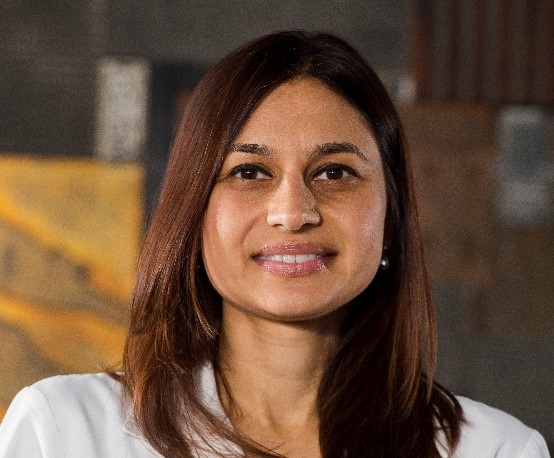 This past spring, Rupa Patel, MD, MPH, a research associate professor of medicine (voluntary) in the Division of Infectious Diseases at Washington University in St. Louis who practices HIV medicine in Washington, D.C., and other providers and stakeholders took part in a three-part policy consultation series hosted by HIVMA to discuss innovative health care delivery models for improving health care access, health outcomes and quality of life for people with HIV and people at risk for HIV. The goal of the meetings was to come away with an action plan for doing things differently.
This past spring, Rupa Patel, MD, MPH, a research associate professor of medicine (voluntary) in the Division of Infectious Diseases at Washington University in St. Louis who practices HIV medicine in Washington, D.C., and other providers and stakeholders took part in a three-part policy consultation series hosted by HIVMA to discuss innovative health care delivery models for improving health care access, health outcomes and quality of life for people with HIV and people at risk for HIV. The goal of the meetings was to come away with an action plan for doing things differently.
In this post, the second in a series with several of the participants, Dr. Patel shares her perspective and key takeaways as a provider.
Why are new health care delivery models needed?
We need a new menu of client-centered options to reach everyone along the status-neutral HIV prevention and care continuum. The models discussed during the meetings, street medicine (providing services to unsheltered individuals where they live) and differentiated service delivery (tailoring the scope of services provided based on an individual’s needs), offer great promise for better reaching individuals with HIV or at risk for HIV who are not currently engaged in health care.
As providers, we have an important role to play in implementing the latest approaches for reaching people who are left out of the traditional health care system, whether it is through mobile vans, providing services onsite at housing encampments or adjusting our standards of care based on the patient’s needs or ability to access services.
To be successful, these new models must incorporate and recognize the value of peer navigators and community health workers in program development and in supporting people at risk for HIV and with HIV with engaging and staying connected to health care services.
What would it take to implement these models in your community?
Based on the meeting discussions and my experience, there are four key elements that will be necessary to successfully implement street medicine and differentiated service delivery in Washington, D.C.:
- Leading with community engagement.
- A respected leader to champion new models of health care delivery within our community health center and within the organizations that we partner with, including the department of health.
- Having the humility to be able to step back and acknowledge when others may do the job better. This can be done through “coordinated collaboration” of service delivery, where each partner organization brings their strengths to the table. As an example, an academic health center can help a local community-based organization write a grant to support patient navigators rather than apply for it themselves.
- Reliable funding and policies that address structural barriers to fully leverage peers and community health workers in service delivery also are needed.
What were your most important takeaways from the meeting?
We need to focus on expanding the HIV workforce beyond MDs, DOs, NPs and PAs to include peers and community health workers, as well as pharmacists and medical assistants, to meet the needs of people with chronic conditions, including HIV.
We must use limited resources more effectively through collaboration and coordination to provide consistent care to everyone. This is particularly important to ensure the needs are met for people in health care deserts.
We also need to address the regulatory and policy changes needed to start to transform health care delivery to better meet the needs of people with HIV and populations at risk for HIV.
What role do health care providers have in advancing innovative health care delivery models?
Such an important question. Providers are critical as leaders and champions to accelerate adoption of new health care delivery models. It can take 17 years to get a research concept into clinical practice. We need to do better. To position health care providers to be leaders in improving health care delivery, it is important for HIVMA (and others) to bring us together so we can collectively lend our voices to make positive change. We also need to reach health care professionals early, during their medical education and training, so they learn key concepts of public health care and program development, including the importance of community engagement.
Don't miss the other posts in the series, featuring Kathleen A. McManus, MD, MS, who discusses why new care models are needed and what it will take to implement them, and Alice Ferguson, who shares her perspective on the need for improvements in how HIV care is delivered and the role of community health workers.
